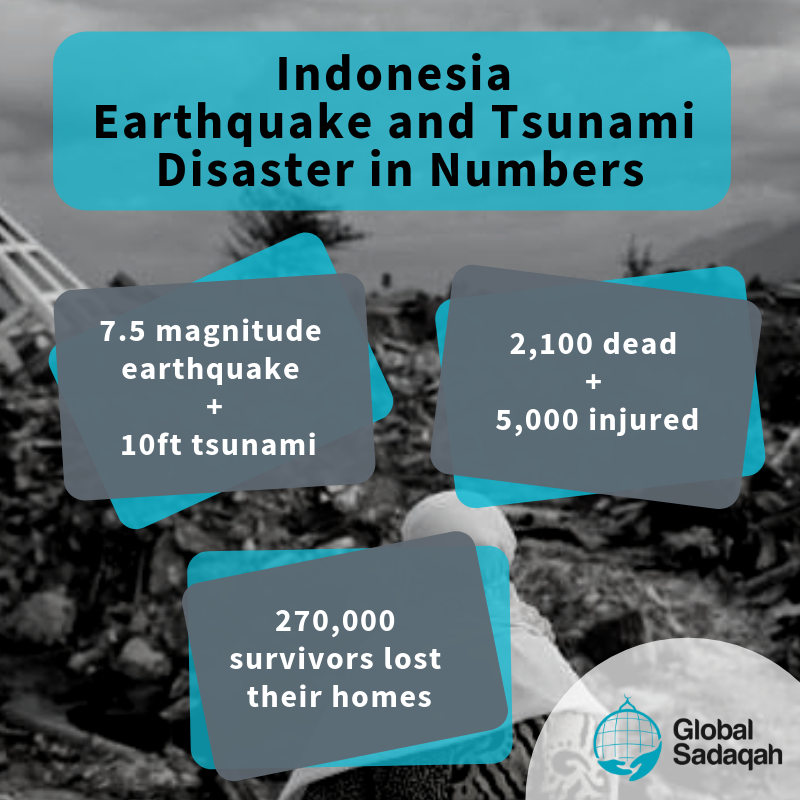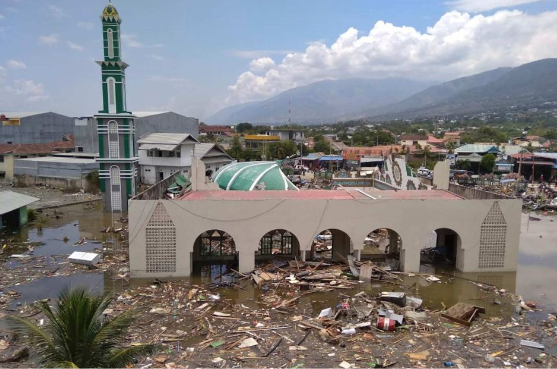Indonesia’s tragic earthquakes
Indonesia is no stranger to natural disasters as it is located at the Pacific Ring of Fire – a region home to hundreds of active volcanoes and earthquakes due to the high degree of tectonic activity. Consequently, the country is constantly exposed to the risks of volcanic eruptions, earthquakes, floods and tsunamis.
Less than 2 months after the massive Lombok earthquake, Indonesia is once again shaken by another earthquake, hitting the Island of Sulawesi. The quake is said to be the second worst in recent history, after the tragic earthquake and tsunami disaster in 2004 that claimed over 200,000 lives.
Who would have thought that the unsung island Palu is now mentioned all over the news worldwide for very tragic reasons – deadly earthquakes and a devastating tsunami.
The Aftermath
On 28th September 2018, a powerful 7.5 magnitude earthquake rocked the Island of Sulawesi. The quake is reported to have triggered a 10 feet tall tsunami that swept away houses and buildings in its course mainly in Palu, a city in Central Sulawesi and several neighbouring cities including Donggala, Balaroa and Petobo.
Due to the earthquake, severe liquefaction occurred in the cities where soil becomes liquid. Liquefaction happens when loose sandy soils with shoal groundwater face sudden loading due to the shaking from an earthquake.
During the earthquakes in the Island of Sulawesi, water pressure is created in the soil and caused a noticeable loss of strength. As a result, the soil acted as liquid and the ground is now no longer able to hold structures such as buildings and homes in place. This rare occurrence is devastating as the land beneath heavy structures break open, causing entire buildings to come crashing down.
Together with the tsunami waves, liquefaction has destroyed thousands of homes, buildings and roads, and caused massive destruction. It is so bad in some places that they are deemed impossible to rebuild.
In fact, Central Sulawesi Gov. Loki Djanggola in Time suggests that survivors in the wasteland look-alike Petobo, Balaroa and Jomo Oge neighbourhoods could be relocated to other neighbourhood and monuments can be built there to remember the victims.
Much Needed Rescue Efforts

According to The Jakarta Post, as of 20th October 2018, the death toll rose to almost 2,100 with over 5,000 are severely injured and 680 family members are still reported missing; probably still buried inside the rubble and mud.
Unfortunately, their efforts are often hampered due to the limited access to machinery and equipment. The aftermath of the earthquakes and tsunami created pools of mud which hinders rescue missions to reach the more remote affected areas. As a result, thousands of bodies are still not found.
NBC News also reported that rescue efforts are slated to end on Thursday, 11 October 2018 and those who are not found will be declared missing and considered dead. The government officials are already seeking consent from the religious bodies and family members of victims to turn severely destroyed neighbourhoods into mass cemeteries.
The Jakarta Post reported that more than 270,000 people and tens of thousands of children lost their homes and were displaced due to the disaster. The authorities struggle to provide them with basic needs including food and water.
Indonesia has always been reluctant to receive international aid as to not be seen as reliant on external help to cope with the disasters. They had managed to do so with the Lombok earthquake disaster last August. However, as Sulawesi disaster is so severe, Indonesia is accepting and seeking help from abroad.
International aid reached Sulawesi a week after the disasters hit the island, as reported by Independent. Indonesia is receiving international help such as medical aid, food supplies and basic necessities like shelter and hygiene kits.
Concerns for the Survivors
Ensuring that survivors are provided with basic necessities is the immediate focus of the authorities over the coming weeks. It is important for the survivors to quickly recover and to cope with the aftermath of the disaster and resume their daily activities normally.
The authority is also concerned about the impact that this tragedy on the mental state of the children. World Vision reported that the local authorities are concerned that the children will be left terrified of the aftershocks and they may struggle to cope with the uncertainty of their future and the loss of their loved ones.
The local authorities’ past experience dealing with children affected by an earthquake indicates that children will become emotionally vulnerable. They are deeply stressed by the loss of their loved ones and homes, resulting them to feel the lack of security in their lives.
How YOU Can Help the Survivors
GlobalSadaqah has partnered up with Kitabisa, an Indonesian fundraising platform to raise the charity funds for the Island of Sulawesi. The funds raised on our online platform will be channeled to the trusted and reliable authority to support the rescuing efforts.
Let’s make a difference and help our brothers and sisters in Indonesia today! Click here for more information about the campaign.

